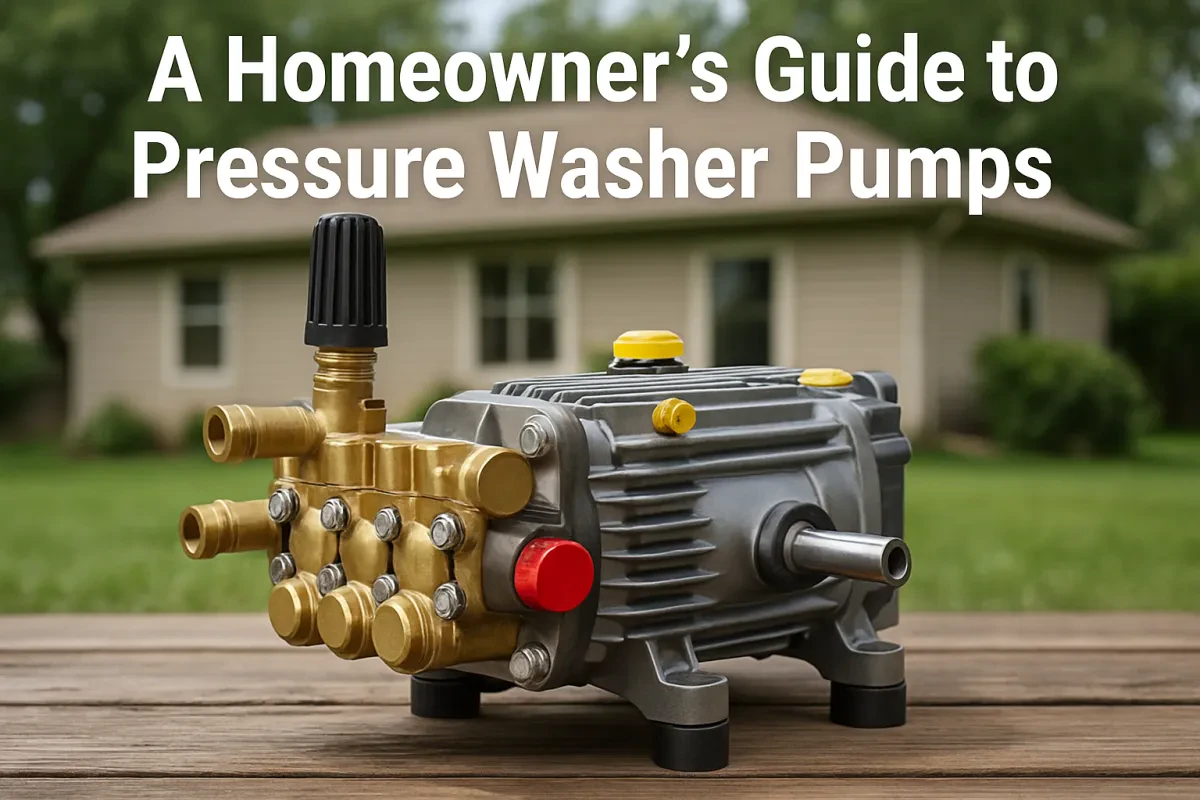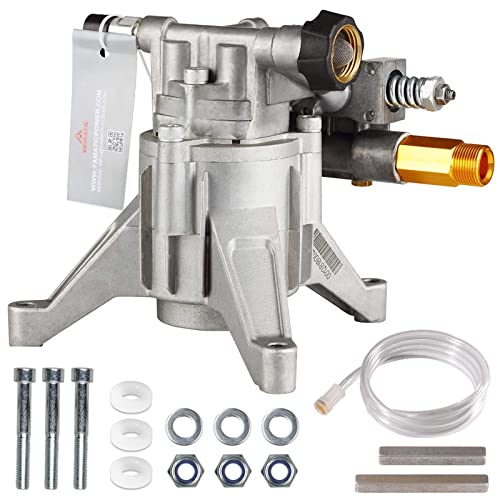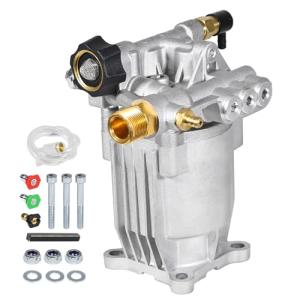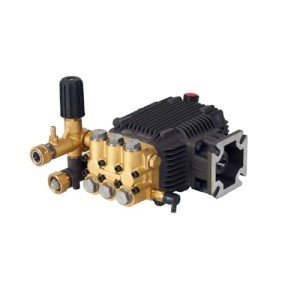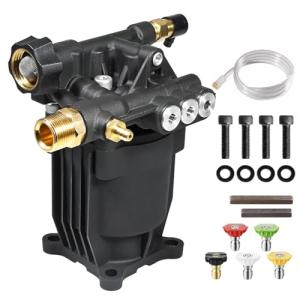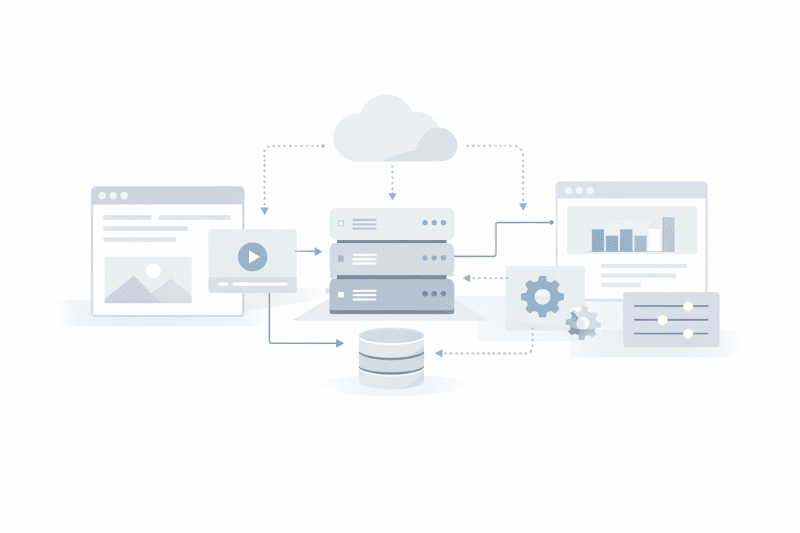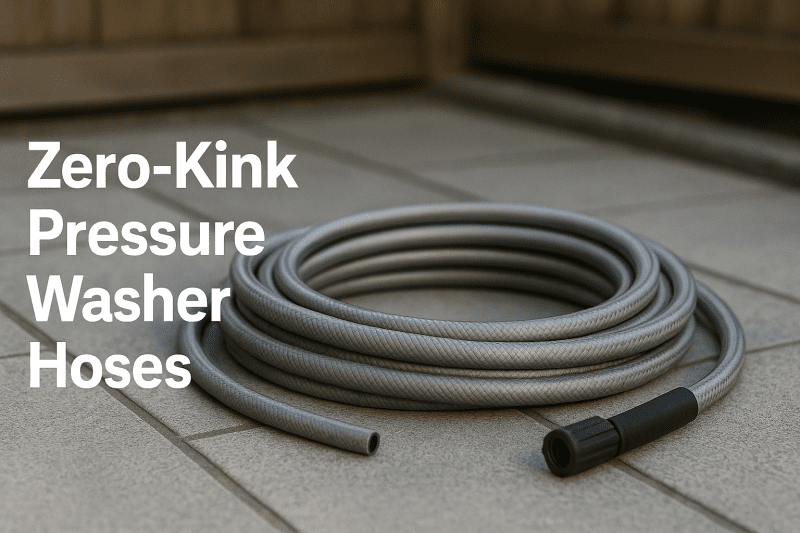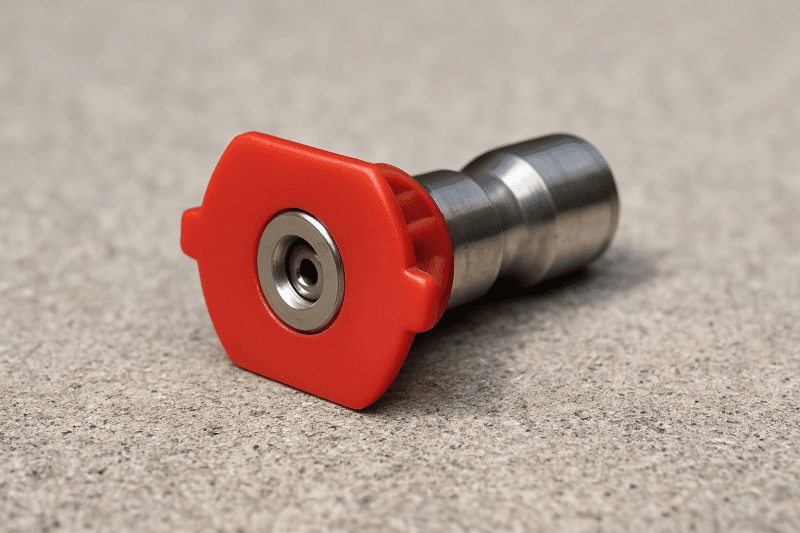The pump is the heart of your pressure washer. While the engine provides the power, the pump does the hard work of taking ordinary water from your tap and converting it into a powerful, high-pressure cleaning jet. Understanding this crucial component is key to your machine's performance and longevity.
Whether you're troubleshooting a problem or considering an upgrade, this guide will provide a clear, simple explanation of pressure washer pumps. We'll cover the main types, common warning signs of failure, and how to choose the right replacement pump or parts for your machine.
The 2 Main Types of Pressure Washer Pumps
For homeowners, pumps generally fall into two categories: axial cam and triplex plunger.
1. Axial Cam Pumps
An axial pump is the most common type found on consumer pressure washers. It uses a series of pistons that are pushed back and forth by an angled plate (often called a wobble plate) that spins with the engine.
-
Pros: They are less expensive and have a compact design, making them ideal for smaller, budget-friendly machines.
-
Cons: They have a shorter lifespan (typically 200-400 hours of use), are less efficient, and most are sealed units that are difficult or impossible to service.
-
Found On: The vast majority of consumer electric and entry-level gas pressure washers.
2. Triplex Plunger Pumps
A triplex pump operates more like a car's engine, using a crankshaft to drive three plungers (pistons) in a smooth, consistent motion.
-
Pros: They are highly efficient, run cooler, and are built for a very long lifespan (often thousands of hours). Crucially, they are fully serviceable, meaning you can easily buy and replace individual parts like valves and seals.
-
Cons: They are more expensive and larger than axial pumps.
-
Found On: All high-end consumer and commercial-grade pressure washers.
Is My Pump Failing? 5 Common Warning Signs
A failing pump will usually give you clear signs that something is wrong. If you experience any of these, it's time to investigate.
-
Pulsing or Surging Pressure: Instead of a steady, consistent stream, the pressure fluctuates wildly or "pulses" as you hold the trigger.
-
Low Pressure: The engine is running at full speed, but the water pressure coming out of the nozzle is noticeably weak.
-
Water Leaking: You see visible drips or small streams of water coming directly from the pump casing itself (not from a loose hose connection).
-
Milky Oil: The oil in the pump's sight glass (if it has one) looks cloudy, grey, or "milky." This is a sure sign that water has gotten past the internal seals and contaminated the oil.
-
Excessive Noise or Vibration: The pump is making loud knocking noises or vibrating much more than it did when it was new.
Repair or Replace? How to Decide
When your pump fails, you face a key decision. This is where the type of pump you have matters most. Your search data shows a high volume of queries for both "pressure washer pump parts" and "replacement pressure washer pump," indicating this is a common dilemma for users.
-
Consider a Repair if: You have a triplex pump. These are designed to be repaired. Common issues like worn seals or bad valves are relatively inexpensive fixes for a service shop, and individual parts are widely available.
-
Consider a Replacement if: You have a sealed axial pump. On these models, the cost of a professional repair can often exceed the price of a brand-new pump. You should also replace any pump that has a cracked casing from being left out in freezing weather.
Choosing the Right Replacement Pump: 3 Things to Match
If you decide to replace your pump, you must match the new pump to your machine's original specifications.
-
GPM and PSI Rating: The new pump's performance ratings must match your original pump's specs. You cannot put a 4000 PSI pump on a machine designed for 2500 PSI.
-
Shaft Orientation: The pump must match your engine's drive shaft. Look at your engine: if the shaft comes out of the side, you need a horizontal shaft pump. If it comes out of the bottom, you need a vertical shaft pump.
-
Mounting Pattern: The bolt pattern on the new pump must line up perfectly with the mounting holes on your pressure washer's frame.
Frequently Asked Questions (FAQ)
What kind of oil do I use in my pressure washer pump? Most pumps use a specific, non-detergent pump oil (often SAE 30 or 15W-40). Never use motor oil. Always check your owner's manual for the exact type and amount.
How often should I change the pump oil? For a new pump, the first oil change should be done after about 50 hours of use. After that, a change every 250-500 hours or at the beginning of each season is good practice.
What is an "unloader valve" and what does it do? The unloader valve is a crucial component that redirects water back into the pump in a loop when you release the trigger gun. This prevents a dangerous buildup of pressure inside the pump. If your machine is pulsing, the unloader valve is often the cause.
